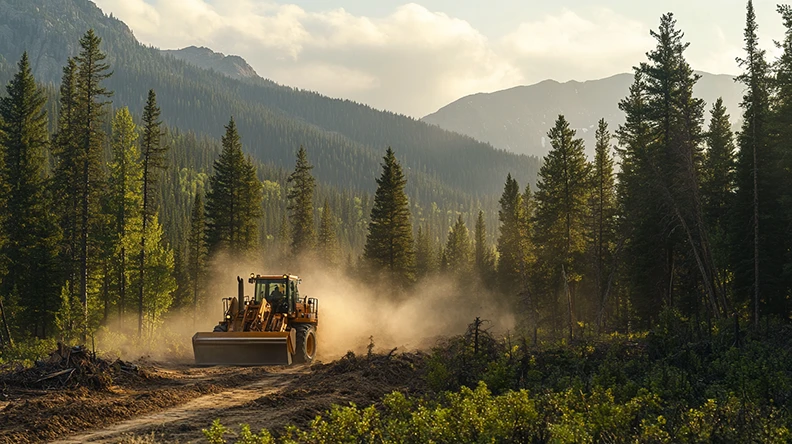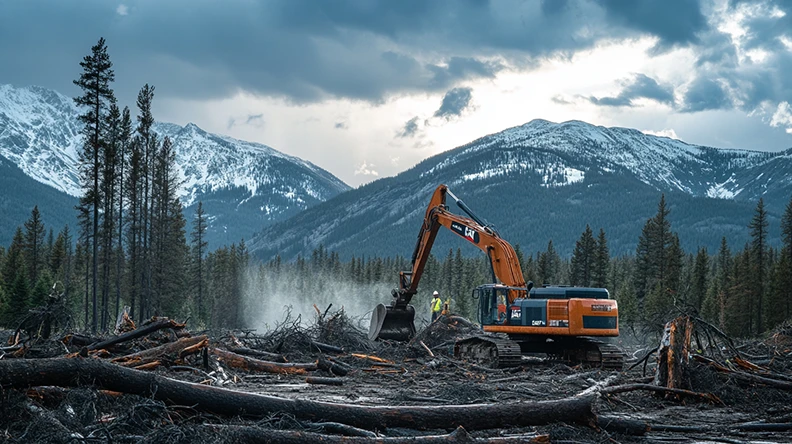Land clearing is an essential part of the land-owning process. Whether you’re preparing the land for development, agriculture, or you’re just trying to prevent it from becoming a fire hazard, there are a number of ways to clear the land. The best way for you to clear the land will depend on what you intend to do with the land you are clearing.
Let’s take a look at the methods of land clearing, and check out some pros and cons of each method.
Common Land Clearing Methods
There are four standard methods of executing a ground clearing. You can use heavy equipment to bulldoze the land. You can also use hand clearing, though this is recommended only for small plots. Controlled burns are another method for ground clearing that is fast and efficient.
Depending on the condition of the land and the size of the parcel you’re clearing, you can also use a mulcher or tiller to clear the land. All of these methods have some drawbacks and require money as well as planning to be successful.
Here are four of the most common land clearing methods you’ll come across:
1. Heavy Equipment Clearing
This method requires the use of heavy equipment to break up and clear the land. Using equipment can make the job fast and easy. This method is often used on large parcels or if the land is being prepared for an industrial purpose. It can also be done as a preliminary effort to make further clearing easier.
There are a couple of drawbacks to this method. To start with, hiring a company or renting heavy equipment is not cheap. You can expect that this will cost thousands, if not tens of thousands of dollars, depending on the size of the job.
Another drawback to using heavy equipment is that the land is often left with a ‘rough finish.’ This means that while the land is clear, you can expect holes, rough patches, and piles of leftover material. The leftovers have to be disposed of, which will require more equipment, and for most applications, the holes and rough areas should be smoothed out.
This method is sometimes referred to as dozing or grubbing and dozing.
2. Burning
Humans have been using burning as a ground-clearing technique for as long as we have worked the land. Fire is good for consuming everything in its path. A controlled burn can leave a field free of any brush or grass. You may find yourself having to do this more than once to completely clear the land.
There are some serious drawbacks when it comes to burning. The most obvious danger is the fire itself. A controlled burn requires constant watching and some precautions to prevent it from getting out of control. While it is a cheap technique, this liability can increase the cost if anything is damaged.
Another issue with burning is that most trees will still be standing. This will require additional steps and costs to remove the leftover debris. Hardy brush and hedges will also resist the fire. There is a danger that, in some areas, the fire will burn too hot and will leave the ground sterile for a time.
3. Hand Clearing
As old as burning, hand clearing is getting in there and taking care of things by hand. This involves using chainsaws, shovels, and other implements. Hand clearing is labor-intensive, requiring a lot of effort to be successful. It can also produce some of the finest results.
Maintaining pastures and clearing land is a task that people have been undertaking for thousands of years. You will remove everything you want and leave what you want as well. This type of method works best if you have a small parcel, such as a housing lot or yard.
A big problem with hand clearing is that the cost of hand clearing goes up depending on the size of the lot. It also takes a lot longer to complete compared to burning off brush or using heavy equipment.
4. Mulching
This method falls in between hand clearing and heavy equipment. There are large, industrial-size mulchers that can be used, called forest mulchers. This method is great for the soil because it chews up organic material that can then be used to fertilize the field itself.
Mulching helps to protect the soil by providing it protection against erosion from wind and water. That being said, there are some considerations. Damage to the equipment can occur and is often expensive to repair. It is also labor-intensive and may require additional costs for larger and more complex jobs.
That being said, mulching is a great way to clear specific tracts of land. The end results will be better than burning or equipment clearing. If you have horizontal mulchers as well, you can clear up to 15 acres in a single day.
Land Clearing Considerations
Before you engage in land clearing, consider the land, its topography, and the purpose you want the land for. If it’s going to be planted or pastured, your considerations will be different than if you want to build a garden or a building on the location.
One unavoidable fact of land clearing is that the more you clear, the more disruption you cause to the environment. Native species can be driven out, and invasive species can begin to spread. Once this happens, it is very difficult to return the land to a natural state.
You should also have a clear idea of how much land you want to clear. If you own a large plot, you might not want to clear it all. It depends on your goal and what you intend to do with the land.
Your Land Contractor
BDH Land Solutions has the experience and equipment to get your job done right. If the job is going to cost more than the quote, we will stop and wait for your approval to continue. There’s no reason to leave land undeveloped when you have the professionals at BDH working for you.
Contact us and let’s start your journey to having developed and usable land.





